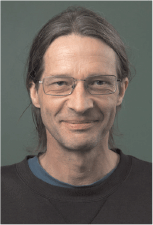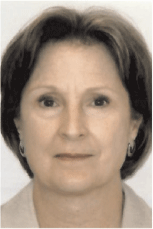Facies architecture of the K10 supersequence in the Browse Basin: when sequence stratigraphy meets lithostratigraphy
Steve Abbott A , Kamal Khider A , Andrew Kelman A and Karen Romine BA Geoscience Australia.
B FROGTECH Pty Ltd.
The APPEA Journal 56(2) 568-568 https://doi.org/10.1071/AJ15074
Published: 2016
Abstract
Regional seismic sequence stratigraphic mapping of the K10 supersequence (Berriasian–Valanginian) has brought into focus the relationship between sequence stratigraphic and lithostratigraphic units. In this extended abstract, the relationship between seismically-defined sandstone bodies and the Brewster Member, an important exploration target and reservoir in the Browse Basin, is investigated.
Deposition of the K10 supersequence started at the onset of rifting between Greater India and the Northern Carnarvon Basin. Sediment sourced from uplifted areas resulted in deposition of the Barrow Delta in the Exmouth and Barrow sub-basins. In the Browse Basin, K10 is also a sand-rich progradational sequence, albeit diminutive compared to the Barrow Delta. Seismic mapping of K10 in the Caswell Sub-basin has resolved stratal geometries and, with the integration of well data, recognition gross depositional facies. Sandstone-prone siliciclastic platform facies (clinoform topsets) include the Brewster Member. The first reference to the Brewster Member in the Australian Stratigraphic Units Database applied the name to the upper part of the K10 sequence between 3,284 m and 3,405 m in Heywood–1. Usage of this name, however, has been inconsistently applied to sandstone-prone units within K10.
Given the significance of the Brewster Member as an exploration target, and as a reservoir in the Ichthys-Prelude and Burnside gas fields, attention to integration of sequence stratigraphic and lithostratigraphic frameworks for this interval is timely.

Stephen (Steve) Abbott has qualifications in sedimentary geology from Flinders (Hons, 1987) and James Cook (PhD, 1994) universities. He joined the energy systems branch at Geoscience Australia in 2013, where he works on regional sequence stratigraphic studies of the North West Shelf. Steve’s past roles include mineral exploration (mainly for sedimentary uranium in central Australia), teaching and research (at Southern Cross University, James Cook University, and the University of Tasmania), and regional mapping with the NTGS). Steve is Vice-president of PESA-ACT. |

Kamal Khider holds BSc, MSc and PhD degrees (stratigraphy and sedimentology) from the University of Baghdad and a PhD in applied geochemistry from the Australian National University. Kamal has 30 years of academic and consultative experience in geosciences working in different academic and industrial geological organisations in Australia (Geoscience Australia, Greenhouse Gas Storage Solution, Bureau of Rural Science, CRC LEME), Middle East and North Africa. As part of the International Geological Correlation Program 174, he worked on regional geological appraisal of the Tertiary basins across the Eocene-Oligocene-Miocene boundaries in Iraq. He also worked with CRC LEME on regional geochemical assessment of the Cobar-Girilambone region, NSW. Kamal has worked as a senior geological consultant in assessing the geological storage potential of Queensland basins and co-authored the Queensland Carbon Dioxide Geological Storage Atlas. Since 2007, he has worked on several of Geoscience Australia’s petroleum and CCS projects. Member: AAPG, GSA, SEPM, PESA. |

Andrew Kelman is a biostratigrapher with the resources advice and promotion branch in the resources division at Geoscience Australia. He completed a BSc at ANU in 1993, and an honours degree in palaeontology and ecostratigraphy at Macquarie University, NSW, in 2005. He joined Geoscience Australia as a palaeontology technician in 1994, moving to his present position with the Timescales Project in 2006. Andrew’s work is now focused on biostratigraphic contributions to the acreage release process and compiling biostratigraphic charts covering the Australian offshore and onshore basins. |

Karen Romine is Director and Principal Geoscientist at FROGTECH, a geoscience consultancy in Canberra. Karen is a seismic and sequence stratigrapher with more than 32 years of experience in the petroleum exploration industry. She obtained a BSc (summa cum laude) in geology from the University of Georgia in 1975, and by 1983, both MSc and PhD degrees in marine geology from the Graduate School of Oceanography, University of Rhode Island, USA. Before joining FROGTECH, Karen was employed by SRK Consulting, Geoscience Australia, and ExxonMobil. Karen has extensive expertise in basin analysis, using stratigraphic and structural interpretation tools and techniques for conventional and unconventional petroleum exploration, geothermal, CSG, coal, and mineral exploration projects. |
References
Ban, S. and Pitt, G.M., 2006—The Ichthys giant gas-condensate field. AAPG International Conference and Exhibition, Perth, Western Australia. 5–8 November, Abstract.Kelman, A.P., Kennard, J.M., Nicoll, R.S., Laurie, J.R., Edwards, D.S., Khider, K. and Le Poidevin, S., 2014—Browse Basin Biozonation and Stratigraphy, Chart 32. Geoscience Australia, Canberra.
Le Poidevin, S.R., Kuske, T.J., Edwards, D.S. and Temple, P.R., 2015—Australian Petroleum Accumulations Report 7 Browse Basin: Western Australia and Territory of Ashmore and Cartier Islands Adjacent Area, 2nd edition. Geoscience Australia Record 2015/10, Canberra.
Marshall, N.G. and Lang, S.C., 2013—A new sequence stratigraphic framework for the North West Shelf, Australia. In: Keep, M. and Moss, S.J. (eds) The Sedimentary Basins of Western Australia 4: Proceedings PESA Symposium. Perth, 1–32.
Martin, C.A.L., and Turner, B.R. (1998). Origins of massive-type sandstones in braided river systems. Earth-Science Reviews 44, 15–38.
Pattillo, J., and NICHOLLS, P.J. (1990). A tectonostratigraphic framework for the Vulcan Graben, Timor Sea region. The APEA Journal 30, 27–51.
Paumard, V., Bourget, J., George, A., Payenberg, T. and Ainsworth, B., 2015—Stratigraphic evolution of the barrow deltas, Northern Carnarvon Basin, North West Shelf, Australia. In: AAPG SEG International Conference and Exhibition, Melbourne, Australia. 13–16 September, 2210802.
Ross, M.I. and Vail, P.R., 1994—Sequence stratigraphy of the lower Neocomian Barrow Delta, Exmouth Plateau, northwestern Australia. In: Purcell, P.G. and Purcell, R.R. (eds) The Sedimentary Basins of Western Australia 1: Proceedings of PESA symposium, Perth, 435–47.
Tait, A., 2004—Lithological Description and Environmental Interpretation of the Ichthys Field Based on Conventional Cores from Brewster–1A, Dinichthys–1, Gorgonichthys–1 and Titanichthys–1. Report for ConocoPhillips Australia Pty Ltd, unpublished.


